Recently, there has been recurring news in the media about the increasing cases of the H3N2 virus. It appears to be affecting a large portion of the population nationwide. The typical symptoms of H3N2 include prolonged cough, sneezing, weakness, fever, sore throat, and ear pain.
H3N2 is a viral infection that is usually self-limiting but requires management under medical supervision. Some cases may worsen and require hospitalisation. Therefore, experts emphasize the importance of careful monitoring and preventive measures.
Is the H3N2 virus dangerous? How can you detect this H3N2 influenza virus and stay protected? We have all the information you need.
So, let’s get started!
Prevention and treatment are closely linked to the early detection of disease, which is why it’s essential to familiarize yourself with the symptoms of H3N2 influenza.
Some common symptoms seen in H3N2 seasonal infection are below:
In H3N2 influenza viral infection, coughing can be quite severe, lasting up to two weeks. Although most people recover from the fever within a week, H3N2 influenza can cause serious illness and necessitate hospitalization in some individuals, and can be particularly dangerous for certain high-risk patients. That is why it is crucial to monitor the patient and seek expert help if the symptoms don’t recede or seem to worsen.
Hospitalisation may be needed for high-risk groups. So this is something to keep in mind if someone in your household with comorbidities such as asthma, COPD, obesity, heart or lung disorders is diagnosed with this infection.
Certain high-risk groups are more susceptible to vulnerabilities than others. If you or your loved ones are in such groups, exercising caution is suggested:
The annual influenza vaccine also provides protection against H3N2 influenza, as well as other types of influenza A, such as H1N1, and certain strains of influenza B.
One annual shot can reduce the risk of severe infection and hospitalisation in everyone.
Discuss the annual flu vaccine with your doctor for yourself and your family.
The majority of H3N2 influenza cases are diagnosed clinically; however, during periods of low activity, infections with other respiratory viruses, such as COVID-19, respiratory syncytial virus, rhinovirus, and adenovirus, can also present as influenza-like illnesses, making clinically differentiating H3N2 influenza from other environmental pathogens a challenging task.
To determine the nature of the pathogen, a respiratory sample, along with a laboratory diagnostic test, will be necessary.
Tests that may be advised by your doctor-
Also Read: How Long Does a Flu Last and Ways to Manage Them
Seasonal influenza, such as the H3N2 virus, can be challenging to contain, especially in densely populated regions, unless everyone maintains good respiratory hygiene at all times. To minimize your chances of infection, get vaccinated every year to maintain optimal vaccine efficacy. Spreading awareness of the do’s and don’ts among your loved ones, friends, colleagues, and educational institutions will also help protect others from contracting the infection.
Also Read: Influenza A: What is It, Causes, Symptoms, Treatment & Prevention
Disclaimer: The information provided here is for educational/awareness purposes only and is not intended to be a substitute for medical treatment by a healthcare professional and should not be relied upon to diagnose or treat any medical condition. The reader should consult a registered medical practitioner to determine the appropriateness of the information and before consuming any medication. PharmEasy does not provide any guarantee or warranty (express or implied) regarding the accuracy, adequacy, completeness, legality, reliability or usefulness of the information; and disclaims any liability arising thereof.
Links and product recommendations in the information provided here are advertisements of third-party products available on the website. PharmEasy does not make any representation on the accuracy or suitability of such products/services. Advertisements do not influence the editorial decisions or content. The information in this blog is subject to change without notice. The authors and administrators reserve the right to modify, add, or remove content without notification. It is your responsibility to review this disclaimer regularly for any changes.
Ayurveda has enlisted the importance of various Arishtas (herbal decoctions) and Asavas (herbal infusion) which are self-fermented polyherbal preparations. These may be well known for the management of digestive and metabolic disorders. One such preparation is Pancharishta. Pancharishta is a traditional Ayurvedic polyherbal syrup (different herbs) popularly used for centuries in India. It is a combination of Asavas and Arishtas. This polyherbal Pancharishta is made by combining and fermenting thirty-five different Ayurvedic herbal plants. Pancharishta may be considered a unique medicinal wine. It is a self-formed alcoholic preparation that may contain approximately 12% of alcohol. Pancharishta syrup formulations may have been used widely from the ancient period without knowing any side effects1,3. Let us discuss the health benefits of Pancharishta, its nutritional ingredients, potential uses and more.
Below listed are the ingredients of Pancharishta (Value in %):
Pancharishta may also contain other ingredients such as ajwain, clove, sugar cane, cumin, coriander, aloe vera and Kunwa (Yeast). It may also contain bioactive phytochemicals like phenol, tannin, saponins, glycosides, carbohydrates, flavonoids, gingerol, piperine and alcohol1,3.
Pancharishta syrup may include the following biological properties:
As Pancharishta is a polyherbal solution prepared by fermentation, it might have detoxification effects on the body due to the presence of various flavonoid and phenolic compounds.
Dr. Siddharth Gupta, B.A.M.S, M.D (Ayu)
The following may be the potential uses of Pancharishta syrup:
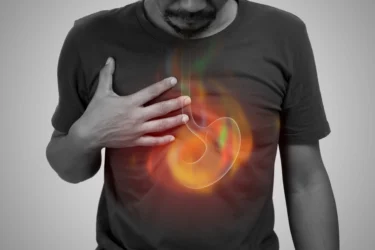
Hyperacidity is caused due to rise in digestive juices creating an acidic environment in the stomach. It may cause heartburn, indigestion, gas etc. An animal study3 by Adhikari et al. 2018 found that Pancharishta contains herbs that may reduce the secretion of stomach acid and increase the pH in the stomach. Thus, it may help in lowering stomach acids and relieving hyperacidity. However, human research is needed to conclude the use of Pancharishta for hyperacidity. If you experience frequent acidity, consult a specialist doctor. Avoid self medication.

Pancharishta syrup is a fermented decoction. It comprises several ‘good bacteria’ which may enhance the digestion process. It may be used as a digestive tonic which may help release digestive enzymes allowing proper digestion of food. It also contains ingredients like Tvak, Lavanga, Tvakpatra and Dhanyaka these are carminative herbs. These may contribute to carminative activity releasing flatulence, bloating, gas and indigestion. Adhikari et al. 2018 suggest Pancharishta may help with digestion in animals. Further human studies are expected to support the benefits of Pancharishta for digestion1,3. If you have digestion problems take the doctor’s advice. Do not self-medicate.
Pancharishta is a polyherbal medicine made by ancient Ayurvedic methods known as Arishta and Asava. It is commonly used as a digestive and cardioprotective tonic.
Dr. Rajeev Singh, BAMS

People might experience stomach pain and stomach cramping due to various digestion issues. An animal study3 by Adhikari et al. 2018 reported that Pancharishta may have anti-spasmodic activity. It may help contractions of stomach muscles. It may assist in relaxation and stop cramps in the stomach and intestine. This may help reduce stomach upsets and pain. Further studies are needed to completely understand the effects of Pancharishta on stomach cramps. Consult a qualified physician and take Pancharishta only if recommended.
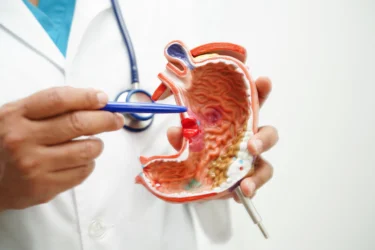
Gastric ulcers happen due to an imbalance in stomach acids and bacterial infection by Helicobacter pylori. A study3 by Adhikari et al. 2018 observed that gastric ulcers may be reduced with the polyherbal formulation of Pancharishta. It may have the action of safeguarding the stomach mucosal lining and maintaining its structure. Hence, Pancharishta may help preserve the cell lining of the stomach and defend against gastric ulcers. However, this is an animal study, more human studies are required to find the true Pancharishta uses for ulcers. Take medical help if you have gastric ulcers. Self-medication is not recommended.

Gastroparesis is a condition that may affect the regular movement of the muscles in the stomach. This might hamper the stomach emptying. An animal study3 by Adhikari et al., 2018 discovered that Pancharishta ingredients may help empty the stomach. This property has been confirmed in animals however, human studies are awaited to support the true use of Pancharishta for stomach emptying. Consult a doctor if you are experiencing stomach issues.

Though studies show the potential uses of Pancharishta in various conditions, these are insufficient and there is a necessity for further studies to develop the scope of the benefits of Pancharishta on human health.
You should consult a qualified doctor before having Pancharishta in large quantities. Do not discontinue or replace an ongoing modern medical treatment with an ayurvedic/herbal preparation of Pancharishta without consulting an ayurvedic physician. They will guide you with its form and dosage per your health condition.
However, more human research is needed to study the side effects of Pancharishta in humans. You must always consult your doctors and get the proper treatment if you come across side effects.
Also Read: Kumaryasava: Uses, Benefits, Side Effects & More!
Pancharishta in the prescribed dose might be safe. However, having it in larger amounts may produce harmful effects. Therefore, a few precautions are essential:
Also Read: Gulkand(Rose Petal Jam): Uses, Benefits, Side Effects By Dr. Smita Barode
Furthermore, clinical studies are required to suggest the herb-drug interaction between Pancharishta and other medicines. We direct that you consult with a doctor before taking Pancharishta preparation and only take it in the given dosage.
Also Read: Guduchi (Giloy): Uses, Benefits, Side Effects and More!
Pancharishta is an Ayurvedic decoction formulation of thirty-five different Ayurvedic herbs. It is a combination of Asava and Arishta. Pancharishta syrup is an alcoholic preparation that may contain 12% of self-generated alcohol. It has been widely used for all stomach-related disorders1,3.
Pancharishta properties may include carminative, laxative, antioxidant, anti-ulcer, digestive, anti-inflammatory and anti-spasmodic. It may help enhance immunity, reduce stomach acidity and help maintain liver health1,3. If you have any such issues consult with your doctors and avoid self-medication.
Pancharishta may contain thirty-five different plant ingredients. The major ingredient of Pancharishta may be a flower called Dhataki (Woodfordia fruticosa)1,2.
Overdosing on Pancharishta should be avoided. It contains a moderate amount of alcohol1. Therefore, excess consumption of Pancharishta might cause symptoms such as vomiting, mental confusion, dizziness, etc. It is best to avoid overdosing and if any complication appears immediately, seek medical help.
No studies have reported the safe use of Pancharishta during pregnancy. Pregnant women should always consult their doctors before using any Ayurvedic preparations such as Pancharishta. They will advise you on the best form and dosage. Do not self-medicate.
Disclaimer: The information provided here is for educational/awareness purposes only and is not intended to be a substitute for medical treatment by a healthcare professional and should not be relied upon to diagnose or treat any medical condition. The reader should consult a registered medical practitioner to determine the appropriateness of the information and before consuming any medication. PharmEasy does not provide any guarantee or warranty (express or implied) regarding the accuracy, adequacy, completeness, legality, reliability or usefulness of the information; and disclaims any liability arising thereof.
Links and product recommendations in the information provided here are advertisements of third-party products available on the website. PharmEasy does not make any representation on the accuracy or suitability of such products/services. Advertisements do not influence the editorial decisions or content. The information in this blog is subject to change without notice. The authors and administrators reserve the right to modify, add, or remove content without notification. It is your responsibility to review this disclaimer regularly for any changes.
Jackfruit is the largest tree fruit that gained popularity due to its sweet, fleshy and energy-rich pulp. The exterior of jackfruit is hard green or yellow initially and turns to yellowish brown after ripening. The inner edible flesh of the jackfruit consists of nutritious pulp coated around the seed, formed by the fusion of flowers. Jackfruit is a non-seasonal fruit that grows on evergreen trees in tropical areas. The biological name of the jackfruit tree is Artocarpus heterophyllus Lam, belonging to the family Moraceae. It is cultivated in Bangladesh, Sri Lanka, Malaysia and various parts of Southeast Asia, Africa and America. Jackfruit grows abundantly in India and is native to the Western Ghats of India1,2.
Apart from the flesh, jackfruit seeds are also edible and are used in cooked dishes. The jackfruit seeds with a thin brown seed coat, known as spermoderm, are enclosed in a white layer. The brown spermoderm consists of white cotyledon rich in protein and starch. Jackfruit seed has a lot of potential benefits, especially in the cosmetics, paper, pharmaceutical and bio-nanotechnology industries2.
Did you know?
The nutrient value of jackfruit seed is as under:
The potential health benefits of jackfruit seed are:
Magnesium is a mineral crucial for body functioning and keeps our bones strong by absorbing calcium in bones. Calcium makes our bones strong and rigid and allows normal body movement. Swami et al., 2012 presented an overview of the functional and medicinal value of Jackfruit. They mentioned that jackfruit seeds are rich in magnesium, which may help in the absorption of calcium in the bones. Magnesium, along with calcium, strengthens bones and relieves disorders related to bones, e.g. osteoporosis (weak and brittle bones). Thus, it is suggested that jackfruit seeds may have potential benefits in strengthening the bones. Further studies should be conducted to validate the efficacy of jackfruit seeds2.
Antioxidants are agents that reduce the effects of free radicals responsible for chronic health problems. Ranasinghe et al. in 2019 mentioned that jackfruit seeds possess a good amount of ascorbic acid and gallic acid which may protect the body from the negative effects of excess free radical production thus promoting antioxidant activity. Therefore, it can be concluded that jackfruit seeds may help in contributing to the antioxidant activity. More data is required to establish the true extent of its benefit on human health1.
Mahanta et al., 2015 and Ranasinghe et al., 2019 mention that the jackfruit seeds extract has shown efficacy against S.aureus, E. coli and B. megaterium revealing that jackfruit seed may have some antimicrobial effects. It may be used to formulate pharmaceutical agents for infectious diseases. Jackfruit seed powder may also help against food contamination. Thus, the seeds of jackfruit may have the potential as an antibacterial agent. Further research should be conducted to validate the efficacy of jackfruit seeds1,3.
Dwitiyanti et al., 2019 conducted a study on pregnant female rats. The jackfruit seed extract was administered to diabetic pregnant female rats. The blood glucose levels of pregnant female rats decreased after the administration of jackfruit seed extracts. Therefore, it is suggested that the jackfruit seed extract possesses activities that may have the potential of decreasing blood sugar levels. Further clinical research is required to investigate the true benefit of jackfruit seed in human health5.
Though there are studies that show the benefits of jackfruit seed in various conditions, these are insufficient and there is a need for further studies to establish the true extent of the benefits of jackfruit seed on human health.
Due to their high fibre content, I’ve experienced that jackfruit seeds may help reduce the risk of heart disease, avoid constipation, and may aid in weight reduction. They are also a good source of B-complex vitamins. Additionally, resistant starch, which may regulate blood sugar and may maintain intestinal health, is included in jackfruit seeds6.
Dr. Siddharth Gupta, B.A.M.S, M.D (Ayu)
You must consult a qualified doctor before taking any jackfruit seed supplements. Do not discontinue or replace an ongoing treatment of modern medicine with an ayurvedic/herbal preparation without consulting a qualified doctor.
Additionally, the researchers have found that the seeds have an abundance of highly soluble protein that may aid in the management of anxiety and stress6.
Dr. Rajeev Singh, BAMS
The most common side effects related to jackfruit seed are:
Also Read: Jackfruit (Kathal): Uses, Benefits, Side Effects and More!
Patients suffering from digestive disorders must consult their physician before consuming jackfruit seeds. Though, there is not much data available on the consumption of jackfruit seeds during pregnancy and breastfeeding. Thus, lactating and pregnant females should ask their gynaecologist before consuming jackfruit seeds. The elderly and children should also consume jackfruit seeds in moderation if necessary and consult a physician if suffering from any health-related disorders.
In my experience, the seeds have a very poor capacity to absorb water and fat. Hence, it may aid in maintaining a healthy weight6.
Dr. Smita Barode, B.A.M.S, M.S.
No interactions are reported in the literature reviewed. If you are on medication, consult an experienced and qualified doctor before taking any jackfruit seed supplements. This can possibly help in avoiding interaction with other medicines.
The seed of jackfruit contains a high amount of protein and other vitamins and minerals, which adds to its nutritional value. Thus, jackfruit seed is edible and is used as a nutritious source of food.
Jackfruit seeds are used after boiling, roasting or cooking. The seeds are boiled in sugar water to serve as a dessert. It may also be used as an ingredient in vegetables and curries in Asian dishes.
The jackfruit seeds may serve a potential in human health and may benefit as an antimicrobial, antidiabetic and antioxidant. It may also provide benefits in strengthening the bones. It may also be used as a substitute to flour with an increase in protein and fibre content.
The patients suffering from digestive disorders must avoid consuming jackfruit seeds. Elderly, children and pregnant and lactating females should consult the doctor before taking jackfruit seeds in any form.
The flour of jackfruit seed may be used in various bakeries and biscuit factories to make cookies. It might also be used as binding and thickening agent in various food industries.
Disclaimer: The information provided here is for educational/awareness purposes only and is not intended to be a substitute for medical treatment by a healthcare professional and should not be relied upon to diagnose or treat any medical condition. The reader should consult a registered medical practitioner to determine the appropriateness of the information and before consuming any medication. PharmEasy does not provide any guarantee or warranty (express or implied) regarding the accuracy, adequacy, completeness, legality, reliability or usefulness of the information; and disclaims any liability arising thereof.
Links and product recommendations in the information provided here are advertisements of third-party products available on the website. PharmEasy does not make any representation on the accuracy or suitability of such products/services. Advertisements do not influence the editorial decisions or content. The information in this blog is subject to change without notice. The authors and administrators reserve the right to modify, add, or remove content without notification. It is your responsibility to review this disclaimer regularly for any changes.
Gandhak Rasayan is a herbal medicine, known as Moringa ovalifolia in various botanical sources. The formulations made from Gandhaka are referred to as Gandhaka Kalpas, where Gandhak in English refers to sulfur and Kalpas refers to medicinal preparation. It is used as a rejuvenator in Ayurveda, which promotes positive health and immunity. The increase in immunity helps the human body to resist various diseases. This property of Gandhak Rasayan also makes it a prophylactic agent (an agent that prevents disease) along with a therapeutic agent.
According to ancient scholars, it is known as “Balivas”, as the king of Bali uses this very attractive sulfur internally to gain more power. Also, if Gandhak is combined with mercury, it transforms into a substance capable of eliminating diseases, known as murcchita state. Thus, gandhak based preparation has widespread clinical use and therefore, holds an important place in ayurvedic pharmaceutics1,3.
The properties of Gandhak Rasayan are:
Gandhak Rasayan vati (tablet) and Gandhak Rasayan powder possess various health benefits. Some of its potential benefits are:
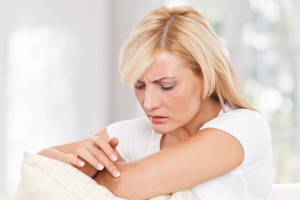
Clinical trials conducted by Sachin et al., 2017 to investigate the role of Gandhak Rasayan vati in Shushka Vicharchika (Eczema) exhibited good clinical improvement in terms of relieving individual symptoms as well as reducing the severity of the disease. Significant reduction in Daha, Kandu (itching), Ruja (sickness), and Sparshasahatva (burning sensation) was observed. Thus, it might be an effective solution for eczema6.

Gandhak Rasayan is considered a wide-spectrum antimicrobial agent with anti-fungal and anti-bacterial properties. Various physicians recommend Gandhak Rasayan vati for the treatment of fungal or viral infection because of its bigger zone of inhibition with fewer side effects and comparatively low cost. The clinical efficacy of Gandhak Rasayan in non-infective post-operative cases was assessed by Kadam et al., 2022. This study2 revealed that various microorganisms that presented resistance to certain tested antibiotics showed good susceptibility to the Gandhak Rasayan. Therefore, Gandhak Rasayan is a versatile ayurvedic medicine that has a wide range of health-benefiting effects.

In a case study, the patient suffering from kushta (Tinea corporis) was treated with Gandhaka Rasayan along with exterior and interior applications of a combination of various oils and vati for 14 days. It has antifungal and antibacterial qualities. It mostly influences Rakta Dhatu and results in Rakta shodhan (purification of blood). Due to its antifungal qualities, it aids in decreasing infection. Additionally, it functions as a rasayan and aids in digestion and skin complexion improvement. Skin problems are treated with sulfur both orally and topically5.

Vulvitis is the inflammation of the vulva (soft folds of skin outside the vagina) which can result either from injuries, infection, allergy, or irritants. Verma and his colleague, 2021 evaluated the efficacy of Gandhak Rasayan lotion mixed with Gomutra arka, suddha Tankan in an effective and palatable management of vulvitis. It was advised to apply lotion on the affected area after the bath for 10 minutes and wash with lukewarm Triphala. The treatment was continued for 15 days in two consecutive months. The results demonstrate a little reduction in the primary vulvitis symptoms and the patches of redness or swelling caused by vulvitis also effectively faded after therapy. Thus, concluding that Gandhak Rasayan may have some potential in the management of vulvitis7.

Gandhak Rasayan may also help in patients with complications such as ulcerative skin lesions over the legs, hands, and back. A similar case was treated with Gandhak Rasayan tablet (125mg), BD for 15 days, by Dr Dhodapkar in 2018. Patient with discharge and pruritis along with pedal oedema and ulcerative skin lesions. Gandhak Rasayan was prescribed for the reduction of infection and healing of skin lesions. It showed a significant reduction in oedema and partial healing of skin lesions in around 15 days8.
I recently read an article which says the use of Gandhak Rasayana may aid in relieving the symptoms of arthritis. Gandhak Rasayana is known for its rejuvenating and anti-inflammatory properties9.
Dr. Siddharth Gupta, B.A.M.S, M.D (Ayu)
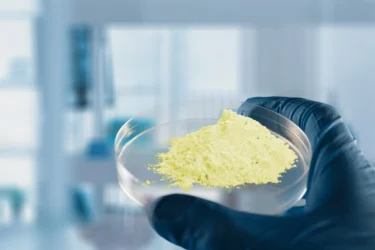
Though there are studies that show the benefits of the herb in various conditions, these are insufficient and there is a need for further studies to establish the true extent of the benefits of Gandhak Rasayan on human health.
Gandhak Rasayan is used in tablet form for the management and potential treatment of various diseases8. It may also be used in the form of topical agents like lotions mixed with other herbal medicines to treat skin disorders7. Gandhak Rasayan is also used as a powder with different herbal juices2.
You must consult a qualified doctor before taking any herbal supplements. Do not discontinue or replace an ongoing treatment of modern medicine with an ayurvedic/herbal preparation without consulting a qualified doctor.
The most common Gandhak Rasayan side effects are loose stools, upset stomach, abdominal cramps, and bloating2. The histopathological analysis of rat models administered with repeated doses of Gandhak Rasayan showed mild hemorrhage in the Kidneys of rats along with mild fatty liver1.
In my experience, Gandhak Rasayana may be used to delay the premature greying of hair. Gandhak Rasayana has a proven rejuvenator property10.
Dr. Rajeev Singh, BAMS
Since there is insufficient information available on the safety and efficacy of Gandhak Rasayan during pregnancy and breastfeeding, it is best to avoid this rasayan in these groups2.
Though there is no information on the interaction of gandhak rasayan with other drugs, some medications should never be combined. If you’re using any other prescription or nonprescription (over-the-counter [OTC]) medication, consult your doctor before taking it.
The side effects of Gandhak Rasayan include loose stool, abdominal cramps, upset stomach, and bloating. Fatty liver and kidney hemorrhage are also some other side effects reported in preclinical studies.
Gandhak Rasayan may help in relieving pain, managing diabetes, respiratory and skin disorders along treating allergies. It may also act as an appetizer and rejuvenator. Gandhak Rasayan may also help in building immunity and positive health.
It is mostly advised to avoid Gandhak Rasayan during pregnancy and lactation. One should always consult a medical health practitioner before taking any herbal drugs.
Gandhak Rasayan consists of sulfur, cow milk, cinnamon, amala, cardamom, patra, guduchi, vibhitaki, haritaki, shunto, and bringharaj along with sugar and water.
It is available as Gandhak Rasayan powder, which can be formulated as Gandhak Rasayan vati (tablet) and as a topical lotion for skin disorders.
Disclaimer: The information provided here is for educational/awareness purposes only and is not intended to be a substitute for medical treatment by a healthcare professional and should not be relied upon to diagnose or treat any medical condition. The reader should consult a registered medical practitioner to determine the appropriateness of the information and before consuming any medication. PharmEasy does not provide any guarantee or warranty (express or implied) regarding the accuracy, adequacy, completeness, legality, reliability or usefulness of the information; and disclaims any liability arising thereof.
Links and product recommendations in the information provided here are advertisements of third-party products available on the website. PharmEasy does not make any representation on the accuracy or suitability of such products/services. Advertisements do not influence the editorial decisions or content. The information in this blog is subject to change without notice. The authors and administrators reserve the right to modify, add, or remove content without notification. It is your responsibility to review this disclaimer regularly for any changes.
You’ve probably heard of this disclaimer on multiple occasions – ‘smoking is injurious to health’. What you may not immediately realise is the extent of the damage smoking can cause to your health and, most directly, your lungs.
Smoking is known to be the leading cause of preventable diseases and deaths globally. Nearly all forms of lung cancer, the top cause of cancer death in both men and women, can be attributed to smoking. Tobacco and tobacco-related products can damage the lungs’ ability to supply oxygen to the body. Other substances commonly found in cigarette smoke can cause permanent lung damage, even in small amounts.
A single puff of cigarette smoke contains upwards of 7,000 chemicals. Tobacco smoke contains over 70 known cancer-causing chemicals2. When you breathe these in, these toxins go deep into your lungs and can cause swelling, resulting in a host of other respiratory diseases.
Both tobacco and chemical substances found in cigarettes can change the cellular structure of the lungs. They can cause the elastic walls within the airways to break down – resulting in less functioning surface area in the lungs. Cigarettes can damage lung tissue, preventing them from functioning correctly. This can increase the risk of diseases caused by smoking, such as chronic bronchitis, emphysema, respiratory diseases, asthma and COPD (Chronic Obstructive Pulmonary Disease)1.
Nicotine in tobacco can also damage the ability of the respiratory system to filter out dust and dirt. This can lead to toxic substances passing through, resulting in lung congestion and the ‘smoker’s cough’.
A person who smokes throughout life is at high risk of developing a range of potentially fatal diseases owing to impaired lung function and breathlessness due to swelling and narrowing of the lung airways and excess mucus build-up. They are also prone to weakening the lungs’ clearance system, leading to the accumulation of toxic substances and causing lung irritation and damage. Further, they are also at an increased risk of lung infection, chronic bronchitis and heightened risk of asthma, along with permanent damage to air sacs3.
In the longer term, smoking is known to induce heart disease and stroke, in certain cases, it can cause ulcers of the digestive system and put smokers at increased risk of type 2 diabetes.
Most smokers are also likely to develop emphysema. The number of cigarettes you smoke and other lifestyle factors may impact the extent of the damage. If you’re diagnosed with either of these respiratory diseases – emphysema or chronic bronchitis, you run the risk of being diagnosed with chronic obstructive pulmonary disease (COPD).
Smoking can affect a person’s health in other ways, too, harming almost every organ in the body. In most cases, it can result in a compromised immune system function, making you susceptible to many other illnesses. It can also lead to lower bone density (brittle bones), which increases the risk of broken bones and fractures. Smoking also leaves you at a higher risk of rheumatoid arthritis, heart disease and stroke, along with an increased risk for cataracts (clouding of the eye lenses).
Apart from respiratory diseases, other visible disorders include an increased risk of oral cancers, gum disease and tooth loss, premature ageing of the skin, bad breath and stained teeth and an increased risk for age-related macular degeneration, which can lead to blindness. Moreover, even your wounds may take longer to heal!
Also Read: 6 Simple Exercises to Improve Your Lung Health
It’s never too late to quit smoking. Within days of quitting smoking, lungs begin to repair themselves. In fact, just 12 hours after you quit, the amount of carbon monoxide in your blood drops to a much healthier level. More oxygen flows to your vital organs and you will be able to breathe better. In about 10 to 15 years, your risk of developing lung cancer reduces and may even become the same as a non-smoker4.
1. Centers for Disease Control and Prevention (US); National Center for Chronic Disease Prevention and Health Promotion (US); Office on Smoking and Health (US). How Tobacco Smoke Causes Disease: The Biology and Behavioral Basis for Smoking-Attributable Disease: A Report of the Surgeon General. Atlanta (GA): Centers for Disease Control and Prevention (US); 2010. 7, Pulmonary Diseases. Available from: https://www.ncbi.nlm.nih.gov/books/NBK53021/
2. National Cancer Institute. Harms of Cigarette Smoking and Health Benefits of Quitting [Internet]. Bethesda (MD): National Cancer Institute; reviewed 19 December 2017 [cited 2025 Sep 19]. Available from: https://www.cancer.gov/about-cancer/causes-prevention/risk/tobacco/cessation-fact-sheet
3. Varghese J, Muntode Gharde P. A Comprehensive Review on the Impacts of Smoking on the Health of an Individual. Cureus. 2023 Oct 5;15(10):e46532. doi: 10.7759/cureus.46532. PMID: 37927763; PMCID: PMC10625450. Available from: https://pmc.ncbi.nlm.nih.gov/articles/PMC10625450/
4. Centers for Disease Control and Prevention. Benefits of Quitting Smoking [Internet]. Atlanta (GA): CDC; updated May 15, 2024 [cited 2025 Sep 19]. Available from: https://www.cdc.gov/tobacco/about/benefits-of-quitting.html
Disclaimer: The information provided here is for educational/awareness purposes only and is not intended to be a substitute for medical treatment by a healthcare professional and should not be relied upon to diagnose or treat any medical condition. The reader should consult a registered medical practitioner to determine the appropriateness of the information and before consuming any medication. PharmEasy does not provide any guarantee or warranty (express or implied) regarding the accuracy, adequacy, completeness, legality, reliability or usefulness of the information; and disclaims any liability arising thereof.
Links and product recommendations in the information provided here are advertisements of third-party products available on the website. PharmEasy does not make any representation on the accuracy or suitability of such products/services. Advertisements do not influence the editorial decisions or content. The information in this blog is subject to change without notice. The authors and administrators reserve the right to modify, add, or remove content without notification. It is your responsibility to review this disclaimer regularly for any changes.
The gall bladder is an organ on the right side of the abdomen and is located below the liver. It stores the digestive juice (bile) secreted by your liver, which is then released into the small intestine to help break down fats. Cholelithiasis is the medical term for gallstones, which are solid deposits formed in the gall bladder. These occur in a range of sizes and can be single or multiple in number.
The symptoms of gall bladder stones may include abdominal pain, indigestion, back pain, fever, and vomiting1. In case you experience any of these symptoms for over a few hours or repeatedly, consult your doctor for diagnosis and treatment.
Remember, diet can play an important role in managing the symptoms of many conditions, including gall bladder stones. So, what should you eat and what foods should you avoid when you have gall bladder stones?
As a doctor, I advise individuals with gallstones to incorporate foods rich in vitamin B and iron into their diet. Some examples may include whole grains, dark leafy greens like spinach and kale, and sea vegetables. These nutrient-rich foods may provide essential vitamin B and iron, which are important for maintaining overall health.
Dr. Anuja Bodhare, B.A.M.S, M.D (Ayu)
A healthy diet may not help to fight all the symptoms of gall bladder stones or save you from surgery; however, it may help avoid worsening of the symptoms. This article aims to provide a guideline on what foods you should include in your diet to help reduce the stress on your gall bladder. We recommend consulting a doctor and a nutritionist for an appropriate meal plan.
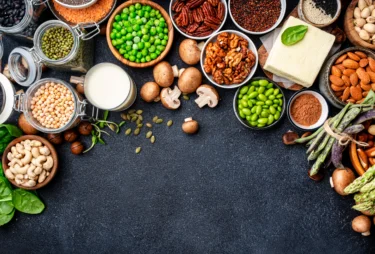
It is common knowledge that plant-based foods such as fruits and vegetables are rich in nutrients, which are essential for the body to stay healthy and functional. They also provide an ample amount of vitamins, minerals, and antioxidants. These antioxidants help remove toxins and free radicals produced by natural processes and processed food. A build-up of toxins can break down the body’s natural balance and cause cell damage. Plant-based foods offer the nutrition needed to get better and help reduce the stress on the digestive system2. Another advantage is that plant-based foods decrease the risk of cholesterol, which may help manage gallbladder stones associated with cholesterol.
As a piece of advice that I consistently offer to patients with gallstones, I recommend basing their meals on starchy carbohydrates such as bread, pasta, rice, and potatoes. By focusing on these wholesome carbohydrates, individuals with gallstones may create a nourishing and gallstone-friendly diet that promotes good health that contributes to a better you9!
Dr. Smita Barode, B.A.M.S, M.S.

Including a source of protein that is low in saturated fat might help lower the levels of bad cholesterol in our bodies. Red meat, a good source of protein, is high in fat, which can put stress on the gall bladder. Thus, choosing lean protein sources might help you manage the symptoms of gall bladder stones. Some common options are:
You should avoid dairy products and also processed meats as they generally have higher salt content. According to a study published in the database of the National Institutes of Health, a higher intake of vegetable protein might help lower the risk of gall bladder conditions3.
Based on my personal experience, I have found a great way to add more fruits to a gallstone-friendly diet. I recommend including fruits like bananas, berries, or a handful of dried fruit in your breakfast cereal. By doing so, you may enjoy a delicious and nutritious start to your day while ensuring you incorporate the benefits of fruits into your diet.
Dr. Rajeev Singh, BAMS
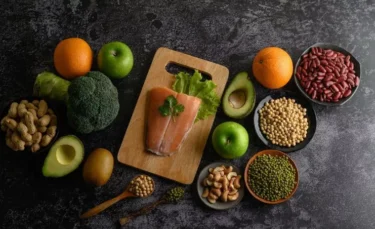
Fibre is essential for good digestive health and enhances the movement of food through our gut. Thus, fibre-rich foods help lower the production of secondary bile acids, which can help decrease the stress on the gall bladder. According to a study published in the National Library of Medicine, a high-fibre diet helped decrease the production of biliary sludge (thick bile that can form gallstones)4. An increase in the amount of this sludge means an increase in the risk of gall bladder diseases. Thus, people who follow a fibre-rich diet might be at a reduced risk of gallbladder stones. It also suggests that a fibre-rich diet might offer relief to people affected with gall bladder stones. Some sources of fibre are:-
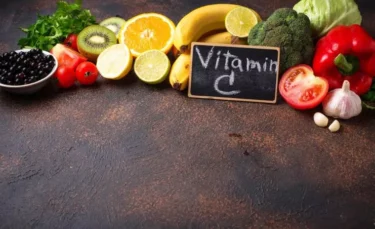
According to a hospital case study published by the National Library of Medicine, vitamin C, magnesium, and folate can help reduce the risk of gall bladder diseases and improve your gall bladder health5. Some sources high in vitamin C are:-
As part of a gallstone-friendly diet, I may suggest incorporating healthy fats such as fish oil. It may help support the regular contraction and emptying of the gallbladder8.
Dr. Siddharth Gupta, B.A.M.S, M.D (Ayu)
Now that we know about what foods we should include in our diet for a healthy gall bladder, let us look at foods we should avoid.
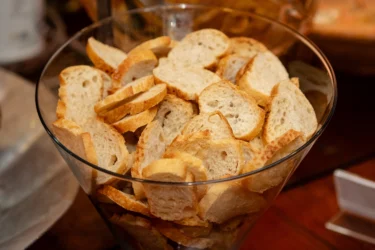
Unrefined carbohydrates are considered to be healthy and some sources, like whole grains and cereals, can provide essential nutrients. However, refined carbohydrates are more difficult to digest and may increase the risk of gall bladder diseases6. Some carbohydrates that you need to steer clear of are:-
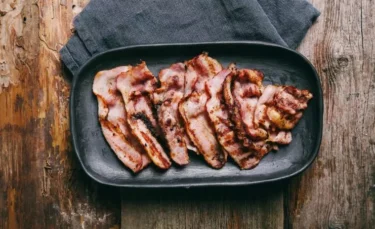
The bile produced in the gall bladder helps dissolve fats. However, it is difficult to break down saturated and trans fats, which may add to the stress on the gall bladder2. Some major sources of unhealthy fats are:-

Despite taking precautions, in some cases, the gallbladder may still need to be removed. Removal of the gall bladder does not have any serious adverse effects on the body’s digestive system. However, other body systems will take time to adjust, during which the individual must make certain dietary changes to accommodate the body’s condition. Some common tips include:-
Always be sure to consult your doctor if you have nausea and pain.
The management of gall bladder stones primarily depends on adopting a balanced, plant-based diet with lean proteins, fibre-rich foods, and adequate vitamin C. Removing refined carbohydrates and unhealthy fats from your diet may help you avoid further stone formation. After gall bladder removal, eating smaller, lighter meals and allowing your digestive system time to adjust may help support faster recovery and long-term digestive health.
It is important to adopt a diet that puts less stress on the digestive system and is rich in fibre to help promote digestion. Refer to the article for detailed guidelines.
Avoid oily and deep-fried foods. Anything that triggers indigestion or bloating must be avoided.
Some common drinks that you can safely consume while you have gallstones are apple cider vinegar, apple juice, peppermint tea, turmeric tea, buttermilk and water. You should avoid drinks like caffeine that can further upset your digestive system.
The best way to get rid of pain due to gallbladder stones is by the surgical removal of the gallbladder. Other ways can be the medicines advised by your doctor.
Disclaimer: The information provided here is for educational/awareness purposes only and is not intended to be a substitute for medical treatment by a healthcare professional and should not be relied upon to diagnose or treat any medical condition. The reader should consult a registered medical practitioner to determine the appropriateness of the information and before consuming any medication. PharmEasy does not provide any guarantee or warranty (express or implied) regarding the accuracy, adequacy, completeness, legality, reliability or usefulness of the information; and disclaims any liability arising thereof.
Links and product recommendations in the information provided here are advertisements of third-party products available on the website. PharmEasy does not make any representation on the accuracy or suitability of such products/services. Advertisements do not influence the editorial decisions or content. The information in this blog is subject to change without notice. The authors and administrators reserve the right to modify, add, or remove content without notification. It is your responsibility to review this disclaimer regularly for any changes.
Hernias are caused when a weakness in the muscle or tissue of the body allows an internal part of the body to push through1. Typically, a hernia occurs between the chest and the hips. There are few or no symptoms initially. However, you may notice swelling or a lump in your belly (abdomen) or groin.
3 of the most common types of hernia are:
Exercise can be safe for some people with hernias. It may be safe to exercise with a hernia, but caution should be taken. To prevent additional stress on your hernia, focus on activities that won’t strain that area. It is not recommended to perform exercises or lift routines that strain or pull the abdominal area when suffering from abdominal hernias. Nevertheless, there are several exercises to avoid. Working out safely begins by knowing which exercises to avoid.
Furthermore, working out with a qualified personal trainer or an accredited physiotherapist is recommended. The trainer or physiotherapist can help you with safe exercises. Consult your doctor before exercising when you have been diagnosed with a hernia or are recovering after a hernia operation.
Some evidence is that exercise or yoga can help with or speed up the healing process after Hernia surgery. Exercise and yoga are recommended by physicians and physical therapists for a healthy lifestyle. Understanding the right exercises and the time to begin them from your doctor is important.

Use the thigh muscles during Pillow Squeeze. Begin by lying flat on the floor and bending your knees. Inhale deeply while holding a pillow between your knees. As you exhale, squeeze the pillow gently with both knees. Make sure to repeat this exercise 20 times daily.

Keeping your knees in the same position, exhale while sitting with a pillow between them. Lift your waist and rest your arms on the floor to provide support. Try to stay as straight as possible from your shoulders to your knees. Take in as much air as you can. Sit with a pillow between your knees and return to the initial position. Repeat 20 times daily.

Bend your knees and lie down flat on the floor. Your head and chin should be at the same level. Then, raise one leg up, keeping the other leg bent. Try wrapping a towel around your foot and pulling the lifted leg towards yourself. Try to stretch your hamstring muscles until they feel a bit stretched. Hold that position for at least 30 seconds. Then go back to the starting position. Perform this exercise 10 times a day with each leg.

Keep your knees bent and inhale as you lie flat on the floor. As you exhale, open one knee sideways. Bring it as close to the floor as possible. Now bring the knee back. Proceed in the same manner with the other knee. Do this five times per day. Maintain a straight body position during the exercise.

Keeping your feet apart, bend your knees in the same position. Inhale as you hold your arms straight out in front of you. Inhale slowly as you roll over your hips on your right side. Bend both knees sideways. Do the same on the other side. Repeat this exercise ten times a day, then increase to 20.
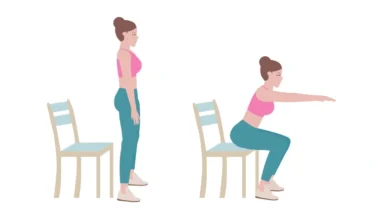
The pose helps strengthen the lower body and core. Keep your feet close together. Put your hands over your head while pressing your knees together. You should keep your thighs parallel to the floor by bending the knees as much as possible. Return to the starting position after holding the stretch as long as possible.
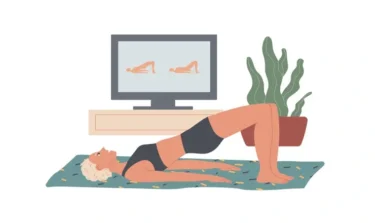
Strengthen the muscles in your stomach with this exercise. With both feet flat on the floor, lie on your back with the knees bent. Keep the shoulders down and lift the lower back off the floor. Remain in this position for as long as possible before returning to your starting position.

It strengthens the diaphragm and can benefit people affected by Hiatal hernias5. You can either sit up or lie down. One hand should go on the stomach, the other on the chest. Take a deep breath through your nose, focusing on your stomach as it rises. Focus on lowering the stomach as you breathe out through pursed lips. Repeat this a few times.

Strengthen your lower abdominal muscles by cycling your legs in the air. Lay on a slant board. You can remove excess pressure from your head and feet while exercising with slant boards. You can do bicycle leg exercises on your slant board by lifting your legs towards your chest. Stabilise yourself by holding your sides while pedalling your legs. Perform these exercises in 10 to 15-minute sessions three times every week.

It is vital to maintain a flexible abdomen to reduce the risk of hernias. Keep your knees straight while you lie flat on the floor. Keeping your back firmly on the ground, bend your legs on each side and try to touch the surface. Keep the posture in place for 5-10 seconds, then return to your starting position. Repeat the exercise on the opposite side. You should perform this stretch daily. Stretching your abdominal muscles increases their flexibility, making them less likely to weaken under pressure.

Any exercise should be performed with correct breathing. Take deep breaths from your abdomen rather than your chest. It helps release abdominal pressure by lifting the diaphragm. Your back should be on the ground. One hand should be placed on your chest, and the other on your belly. Let air enter your abdomen as you breathe through your nose. You should raise your lower hand instead of the hand on your chest as you breathe in.
To be done only after discussing with the surgeon:

In the aftermath of surgery, it is normal to feel some pain. In particular, after abdominal surgery, deep breathing can be quite painful, which makes people breathe very shallowly. Sometimes, the inability to expand the lungs properly can lead to infections in the bottom of the lungs. You should therefore take a few conscious deep breaths throughout the day. You should also use controlled coughing to rid yourself of phlegm or sputum. To aid in coughing and clearing the lungs properly, you can hold a pillow or towel near the surgical wound to provide some support.
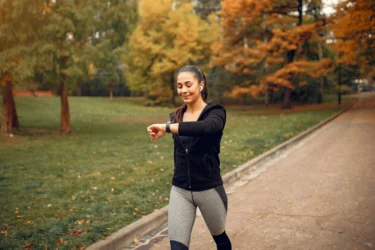
Walking around after hernia surgery is a highly recommended exercise to enhance the speed of your recovery. By doing so, you encourage your circulation to run smoothly and encourage your gut to keep working. It is important for patients to walk a little after surgery and increase the distance after recovery. Walking helps speed up recovery and prevents infection and blood clots.

Leg exercises provide you with the strength to keep your legs mobile and prevent blood clots by keeping the circulation moving. Repeat each exercise several times to start with and increase repetitions as you get stronger.

Your core muscles will be strengthened, thus reducing the risk of hernias:
Also Read: Is It Possible to Increase Penis Size? Myths vs. Medical Facts
Certain exercises and activities should be avoided after your hernia surgery or if you have a hernia:
Also Read: 6 Best Yoga Poses & Exercises To Deal With Piles
When exercising with a hernia, keep certain tips in mind to make sure you remain safe. One of the most important steps is to avoid the exercises listed above. As part of your exercise routine, make sure that you include aerobic exercises, glute bridges and postural strengthening exercises.
Be sure not to overdo it. You should be gentle with yourself until your hernia has recovered. If you do it correctly, exercise will help you manage your hernia better and prepare you for surgery if necessary. After surgery, it is definitely an important part of your prevention plan
You always run the risk of worsening hernias when you begin exercising. Hence, patients must seek treatment for a hernia before participating in intense exercise. Every person is different therefore, it is mandatory to discuss with your doctor the right time to begin exercises and the type of exercise one should engage in.
Also Read: Food Choices for Hernia: What to Eat and Avoid
It is safe to exercise with a hernia, however, there may be risks to making your hernia worse. If done correctly, exercise can help you cope with your hernia better6. Ensure to be careful and not overdo your exercises or perform any strenuous exercises. Consult your doctor before doing any exercise.
The benefits of exercise may help you manage many chronic health conditions and alleviate the symptoms of a hernia. However, you must be careful, as some exercises can cause strain on your affected area and may worsen your hernia.
Core exercises such as crunches, planks, sit-ups and some pilates, in other words, exercises that are more advanced, should be avoided. Performing heavy lifting exercises, including deadlifts and squats, at a high intensity, can result in your hernia getting worse. In addition, avoid sports with high impact or contact. Avoid bending down and lifting anything heavy at home.
Yes, walking is a highly recommended exercise for a person suffering from a Hernia. You can go for short walks unless advised otherwise by your doctor.
Disclaimer: The information provided here is for educational/awareness purposes only and is not intended to be a substitute for medical treatment by a healthcare professional and should not be relied upon to diagnose or treat any medical condition. The reader should consult a registered medical practitioner to determine the appropriateness of the information and before consuming any medication. PharmEasy does not provide any guarantee or warranty (express or implied) regarding the accuracy, adequacy, completeness, legality, reliability or usefulness of the information; and disclaims any liability arising thereof.
Hernia is a condition that occurs when an internal organ or tissue pushes through a weak spot or region in the covering muscle or tissue that is supposed to contain it. For example, one of the most common types of hernias is when the intestines (internal organs) push through the lower abdominal muscle wall (surrounding tissue). This produces a bulge in the lower abdominal area1.
A hernia may not be serious immediately, but many hernias tend to worsen with time and will require surgical intervention. Anybody can get a hernia regardless of age or gender, although it may be more common in older adults and those who are overweight. Most hernias occur within the abdominal cavity, between the chest and the hip.
It produces a noticeable lump or bulge that can be pushed back in or that can disappear when lying down. Laughing, crying, coughing or straining during a bowel movement or physical activity may make the lump reappear after it has been pushed in. Speak with a doctor immediately for an appropriate diagnosis.
A hernia can be caused by several reasons. The weakening of the enveloping tissues or other muscles due to ageing, strain, obesity, or birth defects can make it easier for internal organs to push through1.
Risk factors for hernia may also include pregnancy, being overweight, straining when going to the toilet, forceful and regular coughing, or giving birth. Additionally, some hernias may be caused after a surgical procedure, while other hernias, such as hiatal hernias, do not have causes that are fully understood.
This is the most common hernia. The inguinal canal goes from the abdominal region to the lower groin. The weakening of tissues in this region may cause the intestines or tissue from inside to push through and create a bulge at the top of the inner thigh2.
A femoral hernia is a rare type of hernia in the groin region that occurs over the femoral canal in the upper thighs. This type of hernia is more likely in older women3.
When the tissues or muscles near the belly button (navel) become weakened, the internal tissue can push through and make a bump in that area. This is known as an umbilical hernia. If the hernia is detected above the navel but below the breastbone, it is known as an epigastric hernia. This hernia may be noticed more often in young children4.
Inside your body, your digestive organs, like the intestines, are kept separated from the upper chest cavity due to the diaphragm. The diaphragm is a muscle within your chest that keeps the organs separate and organised, but sometimes the diaphragm can become weakened, damaged or have defects from birth. This leads to parts of the stomach pushing through and entering your chest region, known as a hiatal hernia. In some people with severe defects, not only the stomach but multiple organs from the tummy region are free to push into the chest area. This is called a diaphragmatic hernia5.
Incisional hernias occur at the site of an incision or cut, usually made for surgical purposes. After the surgery, the body may not heal the muscle tissue properly, which may lead to a weak point developing. This makes it easier for a bulge to form and the internal organs to push through. Some types of incisional hernias are called ventral hernias6.
Avoiding too much straining of your abdominal muscles after abdominal surgery and allowing your muscles to heal completely goes a long way to prevent the development of a hernia.
Dr. Ashish Bajaj, M.B.B.S., M.D. in Clinical Pharmacology and Toxicology
A hernia can be easily noticed since they typically occur in common places and have similar symptoms. In most cases, you will need to speak with your doctor immediately after finding a hernia. Here are a few key signs to watch for:
Hernia home remedies do not cure a hernia. But they may help reduce the risk of hernia in some people. Consult a doctor for proper diagnosis and treatment of a hernia.
Do not try any exercise or home remedies without your doctor’s consent.

One of the main causes of hernia is strenuous exercise or overexertion. If you are engaged in heavy exercises, cut back and perform easy workouts. People who have suffered from hernia before should refrain from lifting heavy weights7. Some of the following exercises can help reduce the hernia:

Light cycling may be considered safe for people with smaller hernias and may also strengthen your muscles. If cycling is causing you more pain, then it should be avoided completely.
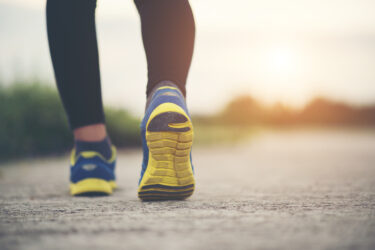
Walking is one of the most beneficial and simple exercises to perform and comes with many health benefits. Walking will generally not put additional strain on your hernia, depending on where it is.

Swimming can relieve a lot of pressure, strain, and pain due to the buoyancy of the water. Speak with your doctor and find out whether this exercise is appropriate for you. You will need to avoid strenuous laps and focus on gentle pool wading to get any benefit from this exercise.

Yoga may also support abdominal muscle strength, similar to the previously mentioned abdominal exercises. Avoid any yoga poses that increase your pain and discomfort, as this may worsen your hernia.

Smaller meals can be effective in decreasing the symptoms associated with hernias that involve the intestines. The less pressure you put on your stomach internally, the easier it is for you to digest your food. This will ensure that your digestive system is not under stress, which may benefit you by limiting your hernia pain.
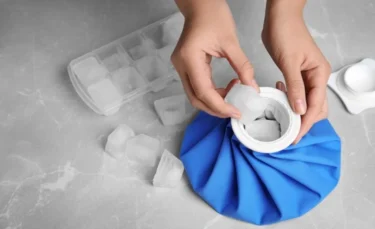
One of the simple natural remedies for hernia is using an ice pack8 as it act as a quick inflammation reliever when your hernia is causing too much discomfort. Always cover the ice with a soft cloth and do not leave it on for long periods.

With more fibre, your stools will be easier to pass and you won’t need to strain. Softer stools can also decrease the risk of constipation.

Obesity and being overweight may increase your risk of a hernia or worsen your condition if you already have one. The more you weigh, the more pressure is placed against your muscle walls. Speak with your doctor about safe ways to lose weight9. While some people may look for hernia treatment at home, it’s important to understand that such cases often require medical attention.
Home remedies for hernia only help in strengthening the muscles and preventing repeat herniation post-surgery. Surgery is the primary treatment for hernia.
Dr. M.G. Kartheeka, MBBS, MD(Pediatrics)
Also Read: Home Remedies for Jaundice By Dr. Siddharth Gupta
If your hernia is not causing you any symptoms like pain or bowel issues, your doctor may not immediately recommend surgery. However, in most cases, a hernia will be accompanied by several serious symptoms that require immediate medical attention. Consult a doctor if you notice the following:
Hernias usually become larger and more severe with time. A strangulated hernia is when the hernia bulge cannot be pushed back inside and becomes trapped within the muscles. This is a dangerous complication. Most hernias are surgically fixed by putting the internal organ back in its place and then strengthening the weak or damaged muscle tissue. Do not delay treatment.
Also Read: 8 Best Home Remedies For Piles
If you suspect that you might have a hernia, speak with your doctor immediately. Even if you do not yet have any hernia symptoms, your doctor will need to monitor your situation and plan for your future. Hernias can be extremely painful to manage and live with. Luckily, there are several surgical options available. Be sure to check with your doctor what instructions you need to follow to manage your hernia before and after surgery.
Also Read: Food Choices for Hernia: What to Eat and Avoid
Most hernias occur due to a combination of two factors occurring at the same time: internal pressure of the organs and tissues and the weakening or opening of muscles or other tissues. This leads to the internal tissue pushing through the outer protective layers and creating a bulge that is easily visible.
The first signs of a hernia are usually a bulge, swelling or bump in the belly, upper and inner thighs, or upper groin that is accompanied by sharp pain in some cases.
A hernia is usually a serious issue unless it is small. Even small hernias eventually turn into serious medical conditions; however, larger ones typically require urgent medical attention and will have more painful symptoms.
No, most hernias do not go away on their own and will require some kind of medical attention eventually.
Hernia often requires surgery to prevent complications such as strangulation or obstruction, but some cases can be managed non-surgically depending on the type, size, and symptoms. Consulting a healthcare professional is essential for an accurate diagnosis and treatment plan.
Yes, hernias can cause pain, especially when the affected area is under strain or pressure. The pain can vary from a dull ache to a sharp, intense discomfort, and it may worsen with activities like lifting, coughing, or bending.
Yes, hernias can cause constipation, particularly if they obstruct part of the intestine. This can lead to difficulty passing stool, abdominal bloating, and discomfort. If you experience these symptoms, it’s important to seek medical advice.
Yes, hernias can affect pregnancy. The increased pressure in the abdomen during pregnancy can exacerbate an existing hernia or contribute to the development of a new one. It is important for pregnant women with hernias to consult their healthcare provider for appropriate management and monitoring.
Hernias typically do not directly cause weight loss. However, if a hernia leads to complications such as intestinal obstruction or severe pain, it may result in reduced appetite or difficulty eating, which could contribute to weight loss. It’s important to seek medical advice if you experience unexplained weight loss along with hernia symptoms.
A hernia occurs when an internal organ or tissue pushes through a weak spot or tear in the surrounding muscle or connective tissue. This can be caused by factors such as heavy lifting, chronic coughing, obesity, or strain during bowel movements.
A hernia often feels like a noticeable lump or bulge in the affected area, which can be accompanied by discomfort or pain, especially when lifting, bending, or coughing. The pain can range from a dull ache to a sharp, severe sensation.
Hernias can sometimes be managed without surgery through lifestyle changes, such as avoiding heavy lifting and maintaining a healthy weight, or using supportive devices like trusses. However, surgery is often recommended to prevent complications and provide a definitive solution.
Yes, hernias can recur even after surgical repair. Factors such as the strength of the repaired area, the patient’s overall health, and postoperative activities can influence the likelihood of a hernia reoccurring.
Hernias themselves do not cause cancer. However, in some cases, a hernia may obscure an underlying tumour or cancerous growth, leading to delayed diagnosis. It’s important to consult a healthcare professional if you notice any unusual symptoms or changes in the area of a hernia.
While hernias themselves are not typically life-threatening, complications such as strangulation or obstruction, where blood supply to the herniated tissue is cut off, can be serious and even life-threatening if not treated promptly. Seeking medical attention for symptoms of a hernia is important to prevent complications.
There can be a genetic component to hernias, as certain inherited factors may predispose individuals to weakened abdominal muscles or connective tissues, increasing the risk of developing a hernia. However, lifestyle factors such as heavy lifting, obesity, and chronic coughing also play significant roles.
While hernias primarily manifest as a noticeable lump or bulge in the abdomen, they can sometimes cause referred pain, including back pain. This may occur if the herniated tissue presses on nerves in the abdomen or affects the alignment of the spine, leading to discomfort in the back or surrounding areas.
A hernia cannot be completely cured naturally, but certain lifestyle changes may help manage its symptoms and prevent it from worsening. Maintaining a healthy weight, avoiding heavy lifting, eating a fiber-rich diet, and practicing gentle exercises can reduce strain on the abdominal area. However, medical consultation is essential, as surgery is often the only effective treatment for a hernia.
1. InformedHealth.org [Internet]. Cologne, Germany: Institute for Quality and Efficiency in Health Care (IQWiG); 2006-. Overview: Hernias. [Updated 2023 Dec 13]. Available from: https://www.ncbi.nlm.nih.gov/books/NBK395554/
2. Hammoud M, Gerken J. Inguinal Hernia. [Updated 2023 Aug 8]. In: StatPearls [Internet]. Treasure Island (FL): StatPearls Publishing; 2025 Jan-. Available from: https://www.ncbi.nlm.nih.gov/books/NBK513332/
3. Goethals A, Azmat CE, Adams CT. Femoral Hernia. [Updated 2023 Jul 31]. In: StatPearls [Internet]. Treasure Island (FL): StatPearls Publishing; 2025 Jan-. Available from: https://www.ncbi.nlm.nih.gov/books/NBK535449/
4. Holt AC, Bamarni S, Leslie SW. Umbilical Hernia. [Updated 2024 Feb 27]. In: StatPearls [Internet]. Treasure Island (FL): StatPearls Publishing; 2025 Jan-. Available from: https://www.ncbi.nlm.nih.gov/books/NBK459312/
5. Smith RE, Sharma S, Shahjehan RD. Hiatal Hernia. [Updated 2024 Jul 17]. In: StatPearls [Internet]. Treasure Island (FL): StatPearls Publishing; 2025 Jan-. Available from: https://www.ncbi.nlm.nih.gov/books/NBK562200/
6. Hope WW, Tuma F. Incisional Hernia. [Updated 2023 Jun 12]. In: StatPearls [Internet]. Treasure Island (FL): StatPearls Publishing; 2025 Jan-. Available from: https://www.ncbi.nlm.nih.gov/books/NBK435995/
7. Pathak S, Poston GJ. It is highly unlikely that the development of an abdominal wall hernia can be attributable to a single strenuous event. Ann R Coll Surg Engl. 2006 Mar;88(2):168-71. doi:10.1308/003588406X95093. PMID: 16551411; PMCID: PMC1964073. Available from: https://www.ncbi.nlm.nih.gov/pmc/articles/PMC1964073/
8. Koç M, Tez M, Yoldaş O, Dizen H, Göçmen E. Cooling for the reduction of postoperative pain: prospective randomized study. Hernia. 2006 Apr;10(2):184-6. doi:10.1007/s10029-005-0062-2. Epub 2006 Jan 24. PMID: 16432641. Available from: https://pubmed.ncbi.nlm.nih.gov/16432641/
9. Dietz UA, Kudsi OY, Gokcal F, Bou-Ayash N, Pfefferkorn U, Rudofsky G, Baur J, Wiegering A. Excess body weight and abdominal hernia. Visc Med. 2021 Aug;37(4):246-253. doi:10.1159/000516047. Epub 2021 Apr 28. PMID: 34540939; PMCID: PMC8406351. Available from: https://www.ncbi.nlm.nih.gov/pmc/articles/PMC8406351/
Disclaimer: The information provided here is for educational/awareness purposes only and is not intended to be a substitute for medical treatment by a healthcare professional and should not be relied upon to diagnose or treat any medical condition. The reader should consult a registered medical practitioner to determine the appropriateness of the information and before consuming any medication. PharmEasy does not provide any guarantee or warranty (express or implied) regarding the accuracy, adequacy, completeness, legality, reliability or usefulness of the information; and disclaims any liability arising thereof.
The hydrocele is an enlargement of the scrotum, the thin sac that contains the testicles. This occurs when too much fluid builds up in the sac. Usually, it occurs in newborns. However, it can also affect adults1.
It is usually not very threatening and might go on its own. However, you should still seek medical attention for it if it does not go away on its own.
Despite being more common in newborns, hydrocele can develop at any age. The development of these may be influenced by underlying injuries or even inflammation. A hydrocele is nothing more than a temporary and inconvenient condition for most people1.
Did you know?
An isolated testicular swelling is usually the only indication of a hydrocele. If you have hydrocele, you might notice symptoms such as redness, itching, soreness, etc. Hydroceles may cause discomfort in adult men due to the heaviness of a swollen scrotum. Generally, the pain increases with inflammation size. Most people with hydrocele do not feel any pain; they just complain of swelling in the scrotum. However, pain may appear along with these other symptoms in some situations. In some cases, the swelling might be smaller in the morning and larger in the afternoon1.
Over the years4, I have observed that based on traditional practices, applying a paste made from fresh corms of Grewia hirsuta (Kukurbijda) on the testicles at night may be used for hydrocele. It is believed that the application of this paste may provide some relief by potentially reducing inflammation or promoting healing in the affected area.
Dr. Siddharth Gupta, B.A.M.S, M.D (Ayu)
Hydrocele can be treated in many ways. However, you should also remember that your diet plays an important role in improving your symptoms. Our diet has a direct impact on our health. People with hydrocele should understand what foods can help improve the condition, as well as which foods can aggravate it. Here are lists of food items that you should and should not eat in this condition:
I have often come across people who get a hydrocele or have dealt with its care. They tend to use the tubers of Gloriosa superba L. (Colchicaceae) by cooking them with mustard oil for two hours. After cooling, the obtained lotion is applied externally on the hydrocele for two to three days. While the exact mechanism is not fully understood, it is believed that the application of this lotion may help reduce swelling and inflammation associated with hydrocele4.
Dr. Smita Barode, B.A.M.S, M.S.
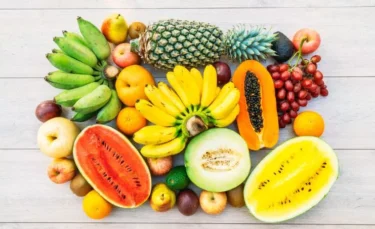
Include fruits like apples, oranges, peaches, pineapple and grapes in your regular diet. Consume fresh, raw fruits and avoid tinned or canned fruits as much as possible. You can also include fresh homemade fruit salads and smoothies without any added sugar.
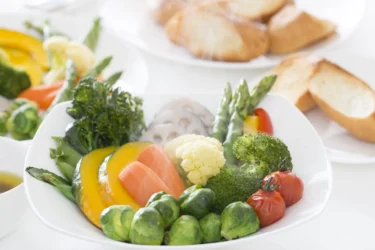
Include boiled or steamed vegetables in your regular diet. You can have a bowl of boiled vegetables served with your lunch and dinner. A healthy alternative would be to have a fresh vegetable salad every day.

Keeping yourself hydrated is very important. Keep a jug or a bottle of water with you always and make sure to drink water every 15-30 mins. Consuming water and other healthy fluids that will keep you hydrated and healthy is vital, more so for people dealing with hydrocele2.

Both black tea and ginger tea are known to have multiple benefits. Similarly, black tea and ginger tea can be beneficial for people dealing with hydrocele. Every day, a small cup of ginger tea may alleviate some pain and inflammation.

Fibrous food is very important for a good digestive system. Fibre-rich foods such as wheat, barley, rye, oats, methi, machine, jowar, bajra etc., can be beneficial for people dealing with hydrocele as it helps improve digestion3.
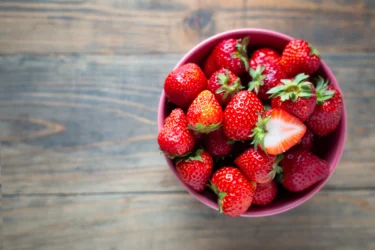
Adding antioxidants to your diet can be very healthy, especially beneficial for people suffering from hydrocele. Strawberries and other red and orange-coloured fruits and berries have high antioxidant content and can help detoxify your body.
Based on my experience, a hydrocele (Eksira) is commonly managed using rhizomes that are dried, powdered, and mixed with honey in a ratio of 1:2. This mixture is taken orally for a duration of two weeks. It is believed that the combination of dried rhizome powder and honey may have potential benefits in reducing the swelling and discomfort associated with hydrocele4.
Dr. Rajeev Singh, BAMS
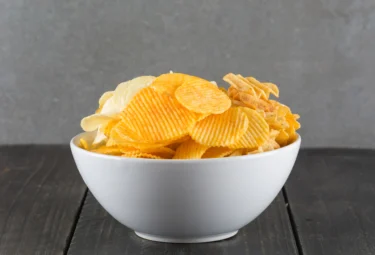
Excess salt and sugar are found in processed foods. These foods can cause many health problems if consumed in large quantities. Furthermore, they lack fibre and vitamins, which are essential for health. The artificial ingredients in processed foods can also cause serious health problems. People suffering from hydrocele should avoid processed foods.

It is recommended to avoid preserved foods in case you have hydrocele. This is due to the fact that they contain a number of chemicals and artificial preservatives that are unhealthy. Complications and serious health issues can arise as a result of these preservatives. Among the most commonly used artificial preservatives are BHA and BHT, both of which are carcinogenic.

It is recommended that junk foods such as pizza, burgers, fries, etc., be avoided because of their low mineral, vitamin and fibre content. There are a number of problems caused by these and the condition of hydroceles may even worsen. In addition, junk foods are often heavy and contain a large amount of fat, which interferes with bowel movements. This results in constipation, which adds to the strain experienced during bowel movements, which can aggravate the hydrocele.

Spice intake should be reduced if you suffer from hydroceles. You should also avoid heavy and greasy foods. Heavy and greasy foods can be harmful to your health. A lot of discomforts can also be caused by such foods.
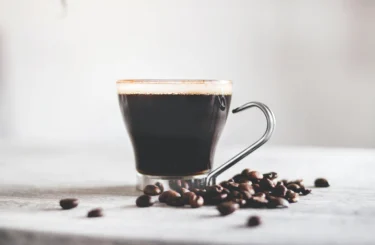
Drinks containing caffeine and pickles should be avoided by people with hydroceles. You may experience digestive problems if you consume excessive amounts of salt and oil in pickles. The consumption of large quantities of caffeine also has harmful effects on the digestive system, among other things.
Also Read: Home Remedies That Ease Your Hydrocele
The above-mentioned tips will be very helpful for people dealing with hydrocele to ease their pain and discomfort. Before following these tips, it is very important to first consult your doctor for proper treatment of hydrocele. Hydrocelectomy (a surgical procedure to remove or treat hydrocele) is an effective solution that may be advised by your doctor. Currently, laser-based surgery is used, which is minimally invasive and painless.
Among the foods that can be beneficial for anyone dealing with hydroceles are fibrous food, fruits and vegetables and plenty of water or any healthy fluid to keep yourself hydrated.
Yoga is highly recommended for hydrocele. Yoga asanas such as Vajrasana, Gomukhasana and Garudasana can be very beneficial.
Hydrocele in infants may heal naturally without any treatment, but in any case, one must consult a doctor for this condition. It is also important to address the cause of swelling and prevent any other complications by prompt treatment.
Hydroceles are more likely to develop in premature babies. An injury or inflammation of the scrotum may cause a hydrocele to appear later in life. Sexually transmitted infections may also cause hydrocele.
1. zaifa M, Moreno MA. Hydrocele. [Updated 2023 Jul 3]. In: StatPearls [Internet]. Treasure Island (FL): StatPearls Publishing; 2025 Jan-. Available from: https://www.ncbi.nlm.nih.gov/books/NBK559125/
2. Leslie SW, Rout P, Pandey J. Filarial Hydrocele. [Updated 2025 Aug 3]. In: StatPearls [Internet]. Treasure Island (FL): StatPearls Publishing; 2025 Jan-. Available from: https://www.ncbi.nlm.nih.gov/books/NBK560776/
3. Akbar A, Shreenath AP. High Fiber Diet. [Updated 2023 May 1]. In: StatPearls [Internet]. Treasure Island (FL): StatPearls Publishing; 2025 Jan-. Available from: https://www.ncbi.nlm.nih.gov/books/NBK559033/
4. Singh H. Traditional phytotherapy for the treatment of hydrocele in Odisha, India. Anc Sci Life. 2012 Jan;31(3):137-40. doi: 10.4103/0257-7941.103198. PMID: 23284221; PMCID: PMC3530339. https://pmc.ncbi.nlm.nih.gov/articles/PMC3530339/
Disclaimer: The information provided here is for educational/awareness purposes only and is not intended to be a substitute for medical treatment by a healthcare professional and should not be relied upon to diagnose or treat any medical condition. The reader should consult a registered medical practitioner to determine the appropriateness of the information and before consuming any medication. PharmEasy does not provide any guarantee or warranty (express or implied) regarding the accuracy, adequacy, completeness, legality, reliability or usefulness of the information; and disclaims any liability arising thereof.
Links and product recommendations in the information provided here are advertisements of third-party products available on the website. PharmEasy does not make any representation on the accuracy or suitability of such products/services. Advertisements do not influence the editorial decisions or content. The information in this blog is subject to change without notice. The authors and administrators reserve the right to modify, add, or remove content without notification. It is your responsibility to review this disclaimer regularly for any changes.
Have you been experiencing an uncomfortable swelling around your testicles? Chances are that you may have developed a hydrocele. It may be difficult for you to understand what this could be, causing stress and panic. Therefore, knowledge about this condition, its symptoms and management can be extremely useful to take the next step. While surgery is a common management modality in modern medicine, traditional medicine has used phytotherapy (treatment using plant species) for managing hydrocele1.
In this blog, we will discuss about hydrocele and its symptoms and also share some home remedies that can help deal with this condition.
Did you know?
Medical terms such as hydrocele are most often beyond the knowledge of an average man; therefore, even if you may be experiencing symptoms, it could be challenging to assess what exactly it is. Hydrocele indicates swelling around the scrotum area which is more commonly observed in newborn babies and usually gets better after some time without any external treatment. However, in adolescent boys and older men, this condition is generally caused by an inflammatory agent or injury inside the scrotal sac. The accumulation of fluid in the scrotal sac causes swelling2.
Hydrocele usually is pain-free and doesn’t pose serious threats to the patient; however, it is always better to be on the safe side and consult with your doctor to get an expert advice on what is causing the swelling.
If you observe pain-free swelling in both or either one of your testicles, it is advised to check with your doctor.
Even though hydrocele under usual circumstances doesn’t result in pain, adult men may experience a feeling of heaviness or some amount of discomfort due to size fluctuation in the scrotum region. In some cases, the swollen area has visibly altered sizes which can cause increased pain and requires medical attention3.
Congenital hydroceles mostly resolve before two years of age. Therefore, parents of such patients should be properly counselled to curb their anxiety. In this regard, providers and nursing staff play a vital role. If hydrocele develops later in life, underlying pathology must be identified, as its prognosis is dependent on it.
Dr. M.G. Kartheeka, MBBS, MD(Pediatrics)
Hydrocele is generally considered a harmless condition. However, there may be various other factors contributing to the swelling of scrotal sac. It is always best to be aware of the potential health risks. You should not self-diagnose your condition or neglect the issue as it may worsen over time. A professional diagnosis renders essential information to take into account. A doctor’s thorough examination will help you establish whether what you are dealing with is entirely non-threatening or carries an underlying health issue that could cause more significant damage.
If you feel you might have an hydrocele, then consult your doctor for diagnosis and management of the condition. Along with medical management, adopting some home remedies may also help in easing the discomfort in your scrotum.
Here are some quick, simple, and effective home remedies you can try:
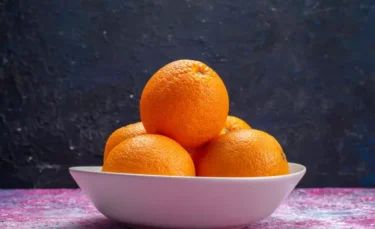
Our diet directly impacts our health. A diet rich in fruits like oranges, apples, pineapples, grapes and peaches can support the immune system and maintain overall health. Especially fruits rich in antioxidants such as strawberries may aid in the body’s detoxification and help dealing with hydrocele5.
However, if you do switch to a fruit-based diet, then it is essential to avoid canned fruits as they consist of high levels of preservatives and additives that can worsen your condition. Moreover, if you have medical conditions like diabetes, it’s best to discuss with your doctor which fruits you can safely take and in how much quantity.
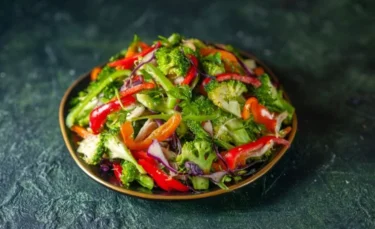
As important as it is to eat your fruits, it is also essential to add a healthy amount of greens to your regular diet. Including lightly sauteed veggies and fresh vegetable salad in your everyday life can play a contributing role in upgrading your quality of life and helping deal with the symptoms of hydrocele5.

A healthy diet ensures a healthy mind and body. Eliminate the toxins from your body by hydrating yourself with loads of water and healthy fluids5.
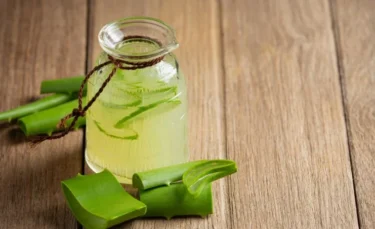
A concoction made of aloe vera and amla juice mixed in equal proportions and consumed every morning on an empty stomach can also be helpful. Their antioxidant and anti-inflammatory properties may help with itching, irritation and puffiness. But talk to a healthcare expert before trying anything new.

Using ice packs at least 2 to 3 times a week may help in easing the pain and soreness5.

Switching to healthier lifestyle alternatives and exercise may help reduce the size of swelling and uneasiness of scrotum6. And yoga may be the right and effective exercise in providing relief to the pain caused by hydrocele. However, it’s important to practice under the guidance of a trained yoga expert to avoid exercises and asanas that can put undue pressure on scrotal areas7.
Also Read: Best Home Remedies for Upset Stomach
Hydrocele or swelling in the scrotal sac can be worrisome if you don’t know about it. Understanding its symptoms can help in diagnosis and reduce panic associated with this condition. While home remedies may help manage mild hydrocele symptoms, these are not a substitute for medical management. If discomfort persists or worsens, it’s important to consult a healthcare professional for proper diagnosis and treatment.
When occurring in newborns, the possibility of a hydrocele disappearing on its own within a year is 70%. Only if the hydrocele remains after two years will the operation be needed. Also, your doctor will evaluate the condition and give the best advice on the necessary treatment.
In an adult, when the hydrocele exhibits a medium to large size, surgery may be the best possible option. Leaving it untreated may cause it to expand in size over a time period causing inconvenience while partaking in daily activities along with constant itching, pain, discomfort and risks of potent infections.
Even though it is pretty uncommon for hydroceles to recur post operation, the possibility cannot be completely ruled out, significantly when the hydrocele has expanded massively.
Disclaimer: The information provided here is for educational/awareness purposes only and is not intended to be a substitute for medical treatment by a healthcare professional and should not be relied upon to diagnose or treat any medical condition. The reader should consult a registered medical practitioner to determine the appropriateness of the information and before consuming any medication. PharmEasy does not provide any guarantee or warranty (express or implied) regarding the accuracy, adequacy, completeness, legality, reliability or usefulness of the information; and disclaims any liability arising thereof.
Next Page »« Previous Page